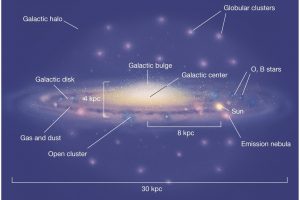The last GES paper “The Gaia-ESO Survey: Exploring the complex nature and origins of the Galactic bulge populations”, by A. Rojas-Arriagada recently published on A&A

The study of the evolution of the Milky Way is one of the main tasks of the Gaia-ESO Survey (link). To this aim, the analysis of the stellar population of the galactic bulge is of particular importance. The bulge is in fact populated by old stars, likely formed in the early evolution of our Galaxy. To date, two scenarios have been suggested to explain the formation of the galactic bulge: it could be formed during the early accretion phase of our Galaxy, or by a secular interaction with the thin disk.
The analysis of the galactic bulge is the main aim of the last Gaia-ESO Survey paper “The Gaia-ESO Survey: Exploring the complex nature and origins of the Galactic bulge populations” by A. Rojas-Arriagada (Laboratoire Lagrange, Université Côte d’Azur), recently published on Astronomy & Astrophysics. In this paper, high-resolution spectra of 2500 stars of the bulge and 6300 of the galactic disk are analyzed, in order to derive their chemical composition and abundances. This ambitious project has been possible only thanks to the high quality and homogeneity of the Gaia-ESO Survey data.
The results are particularly interesting: it is determined for the first time that the older stars, more poor of heavy elements, populate mainly the high latitudes in the bulge, while the population of stars more rich of heavy elements are likely the product of interaction between bulge and disk. The authors also present evidence suggesting a larger star formation rate in the bulge rather than in the disk. The astronomers of the Astronomical Observatory of Palermo Francesco Damiani and Ettore Flaccomio are coauthors of this study in which, for the first time, a chemical analysis of such a large and homogeneous sample of stars in the galactic bulge is presented.
The figure (link) shows the structure of the Milky Way.
